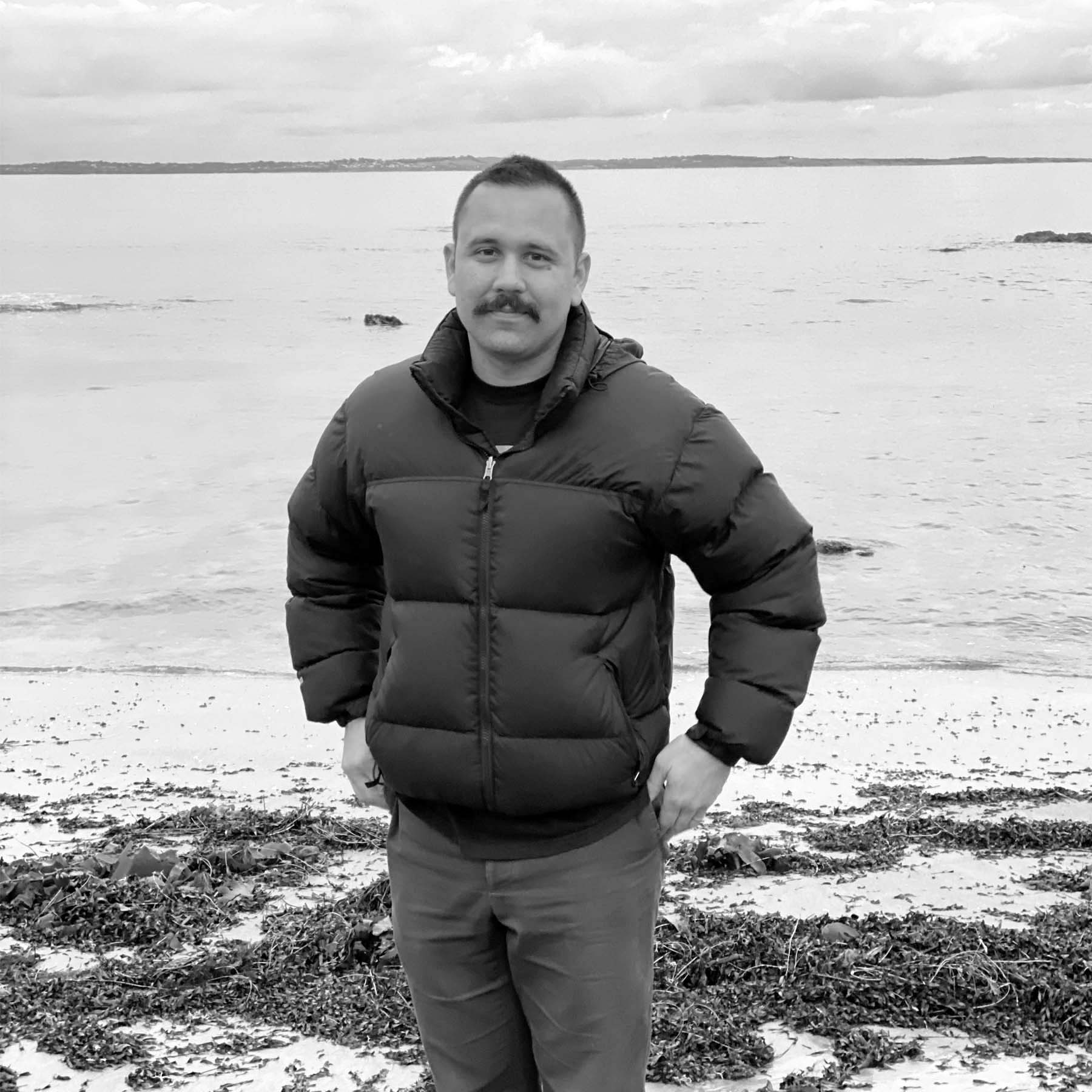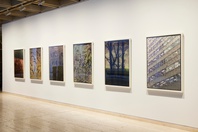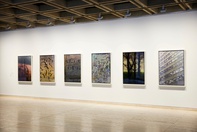Benjamin Prabowo Sexton
Wurundjeri/Boon Wurrung Country, Narrm (Melbourne)
2021
Displayed 2021 at Art Gallery of New South Wales

Benjamin Prabowo Sexton
Born 1984, Jakarta, Indonesia. Lives and works on Wurundjeri/Boon Wurrung Country, Narrm (Melbourne)
Benjamin Prabowo Sexton works predominantly with photography and is interested in the direct exposure and post-production possibilities of the medium. He uses his photographic archive to alter images through experimental darkroom processes, such as masking and misregistration, to form new compositions. His works are typically monochromatic, unique state, silver gelatin prints that combine collage, photography and drawing techniques to step outside the traditional conventions of photographic practice.
Artist text
by Anne Ryan
Documentary photography projects an air of objectivity. While luck or good aesthetic sense may assist in capturing a powerful image, there remains a suggestion that information conveyed in a documentary photograph rises above the subjectivity of its author. Of course, this notion is absurd. The act of capturing and presenting an image is inherently subjective, from the choices a photographer makes at the scene to the point of publication and public consumption. Personality and politics are inevitable inflections on imagery, and form part of their attraction.
Benjamin Prabowo Sexton seeks to embrace this logic in his work, which he describes as a ‘new documentation’. While originally centered on the traditions of documentary photography, his practice has evolved towards an abstracted notion of his subjects, in which they are broken down into motif, texture, shape or symbol. Extracted from sites of universal and local experiences, his images are transformed into an intensely personal experience of one person – himself – at a moment of creativity long removed from their initial capture.
Prabowo Sexton is a collector of images and words. He has compiled an archive of photographic negatives over two decades, and similarly maintains lists of text or conversations recorded as they captured his attention. These archive his experience – some of it incidental, some deliberately sought out – in a collection that is both obscure and intensely personal. The identities of his photographic subjects remain ambiguous – their principal significance is the meaning they hold for their collector. They are a well for him to draw on in a practice that seeks to capture an experience of the present.
Trained as a photographer, Prabowo Sexton has extended his practice through experimentation and the haptic, leaving little to chance in its creation. Selecting from his image archive, he edits and abstracts via masking, stenciling and printing, followed by embellishment with the application of oil paint. The parameters of the work are defined by the size of his studio and darkroom and the capacity of his available materials and tools. These spatial and mechanical limitations serve to emphasise the finely attuned sense of scale as it relates to his body and become welcome elements to be pushed against and experienced by both artist and viewer.
In this series of works, Prabowo Sexton selected source photographs taken around the streets of central Sydney, East Brunswick in Melbourne and Traralgon, a town in Gippsland, Victoria known for its coal and power industries. For the artist, any literal readings informed by this fact are moot – his work is not a didactic or political statement about ‘place’ as such, but rather about the distillation of sensation in a poetic expression of feeling. However, as locations in which the artist has worked for the past 18 months, they inevitably hold personal resonance.
His selections are made on aesthetic grounds, and for their power to project his own emotion: ‘I’m looking for motifs, symbols, images, that tie in with an overall feeling that I’ve got at the moment.’ (1) Here they consist of closely focused fragments of pavement, wall, shadow, tree branch or rusted metal, characteristically worn or degraded, projecting a feeling he describes as ‘tranquil’. These fragments are further abstracted through omission and embellishment in their printing and with oil paint, to create a new vision. The titles came last, and were taken from his archive of collected language and turns of phrase.
Prabowo Sexton’s photography is a distillation of the artist’s experience of the world, in which the past and present coalesce in an object that is very much about the moment and circumstances of its making. In a frank acknowledgement of the subjectivity of documentary photography, and indeed, of art itself, his work reminds us each of our protean experiences of a shared planet.
- Interview between the artist and author, 21 Dec 2020.

